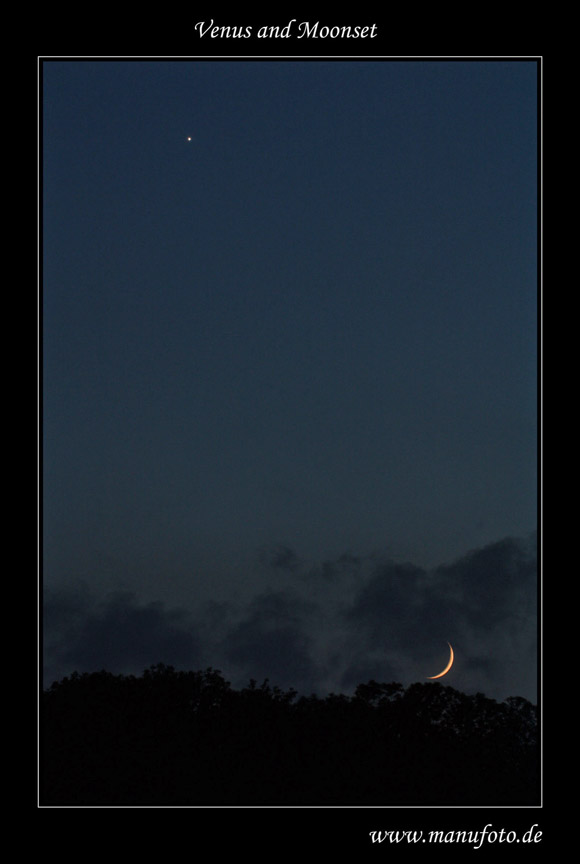July 3, 2010
Sky of Wonder
 |
image by " rel="nofollow Manuel Fernbacher, Germany
Pity the other poor planets of the solar system whose place and circumstance make life drab. Mercury has a huge (3 times bigger than seen from Earth) and glaring Sun and bright stars in its dark daytime sky. From the surface of Venus there is no sky. At Mars, the Sun is smaller and fainter, and dark Phobos, one-third the apparent size of Earth's Moon, races backwards across its dust-reddened sky, with the close twin worlds of Earth and Moon just resolveable. From Jupiter and beyond, the Sun is merely the brightest star, and the moons are small and distant. Saturn's rings must be glorious no matter where they are seen from but the moons are pin pricks on the sky. Only Pluto has a moon that could dominate the night but the brightness is quite low. The Earth with its wondrous Moon, and bright planets wandering across the sky has the best views in the solar system.
" rel="nofollow Chuck Wood
Technical Details
14.06.2010, 22:18 MESZ. Canon EOS 450D with Sigma 135-400, focal length at 170 mm, 1s, f10, 400 ISO.
Related Links
Manuel's " rel="nofollow photo gallery
The " rel="nofollow sky from Mars
The " rel="nofollow Sunfrom Mercury
The " rel="nofollow Sun from Jupiter||
COMMENTS?
Click on this icon File:PostIcon.jpg at the upper right to post a comment.



